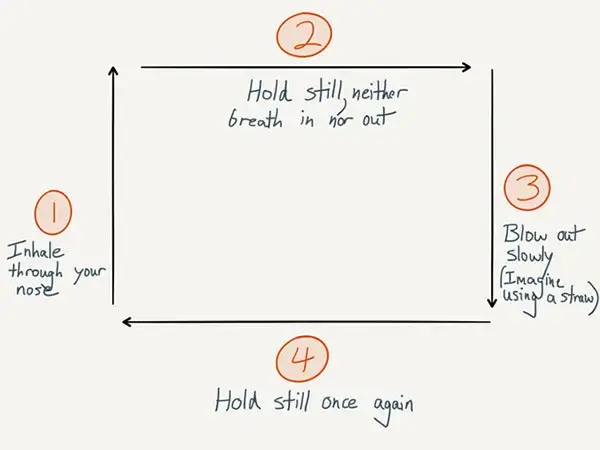MINDFULNESS
If you’ve ever been to a therapist or taken a yoga class, there is always an emphasis on breathing. Breathing patterns and mindful breathing is a fail-safe teaching option for therapy, as it tends to help the brain and body slow down. To better understand the impact of mindful breathing on the body, we have to start with basic science on the act of breathing itself.
Fight/Flight
As we are all animals, we have instinctual drives to pay attention to our environment and protect ourselves. This inherent sense involves an interplay between sight, sound, and smell as well as internal body processing. To be able to effectively run from a bear, you need to have active blood flow to your muscles. To increase that blood flow, you must increase your cardiac output. This requires either an increased heart rate (pulse) or increased overall pressure. Through dilation of blood vessels and increased pressure, the total volume of blood moving into the musculature goes up. For cellular nutrition and energy to escape this bear they need blood flow.
Some of this process will begin with increased oxygen flow and rate of breathing. The last time you were asked to speak in front of others and your anxiety level went up, you likely increased your respiratory rate slightly (or to a great degree). This increase filled your blood with more oxygen for the impending speech (bear attack). Just as with blood flow, the deeper your breaths, the more pulmonary output you created.
Increased rate + increased volume = more oxygen
In summary, increasing your breathing rate with more rapid, deep breaths mobilizes you for a fight or flight position. The opposite also holds true.
Calming Down
Slowing down your respiratory rate serves as a brake mechanism for your nervous system. This happens naturally when the threat of the bear has disappeared. It also can be controlled voluntarily. This is where mindful breathing exercises can improve your stress experience and calm your senses. If you imagine each breath as an inhale or exhale, we can appreciate the components doing different things:
- Inhaling – increases oxygen, necessary for fight/flight
- Exhaling – expelling carbon dioxide, calming down the system
So if you spend more overall time in the inhale portion, you will energize your system and emphasize the fight/flight situation. If you spend more overall time in the exhale portion, you put downward pressure on your nerves, effectively calming yourself:
- Mindful breathing slows down your nervous system through emphasizing the exhale phase
Different Breathing Training Methods
There are a few useful approaches to teach mindful breathing that we use in treatment at CeDAR. All of these essentially do the same thing, so it can be worthwhile finding one that fits you best. One of the most useful and easy-to-teach methods for mindful breathing is called square breathing. Other options include numbered breathing (you count to 3 during an inhale, you count to 5 during an exhale) or lower back breathing (you visualize pressing air out through the base of your back during exhalation). These other options can be effective as well, so explore what you like.
Square Breathing and Mindfulness Blend
One of the benefits of the square breathing method is that it involves a visual mindful component in addition to the breath work. This visual tracing can be somewhat meditative in and of itself. Many people really appreciate this form of breath work and can learn it quickly. It also can be used indefinitely. You would never ‘grow out of’ this method of breathing in favor of something more advanced. The method addresses your nervous system in a tactful way and requires a mindful approach.
For perspective, estimate about 2-second intervals for each phase. You might feel more comfortable going a shorter or longer period for your breaths. The goal of this exercise is to slow down the nervous system and embrace the meditative component of walking around the square with your eyes. Each of these methods, in concert, can be relaxing and help you calm down.
It also can be worthwhile setting a good stage for yourself to do your breathing. Some people make a 2-5 minute commitment every morning to do some square breathing, as they feel this sets them up for a better day. In this way, the person is actually doing proactive stress reduction. This may be the best overall approach, as using breathing techniques solely to manage anxiety attacks or stressful situations may not be powerful enough. Using a pure doctoring approach…
“An ounce of prevention is worth a pound of cure”
This definitely applies to breathing efforts, stress reduction, and anxiety management. As with any of our mindful skills through CeDAR, try them, practice them, and master them! Your nervous system will thank you 🙂
Read more CeDAR Education Articles about Mindfulness including Mindful Muscle Relaxation.

